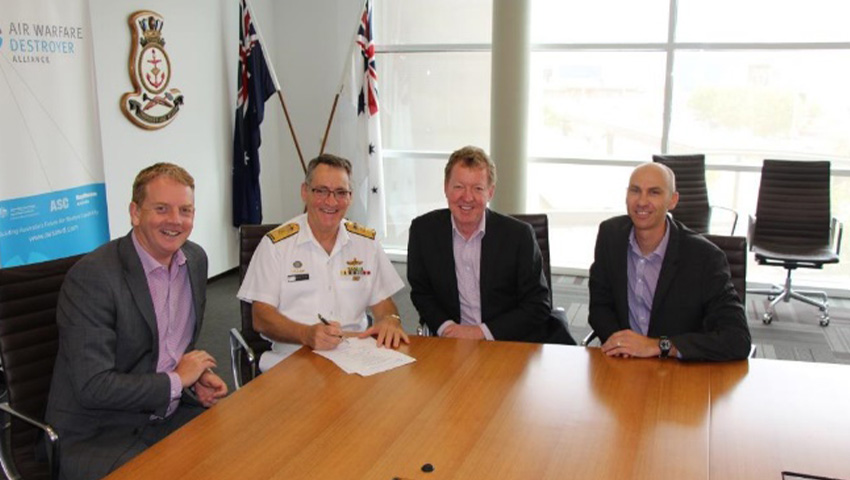After 13 years, the Royal Australian Navy’s Commodore Steve Tiffen, Director General, Naval Construction Branch, has signed the contract for provisional acceptance of NUSHIP Sydney, the last of three air warfare destroyers to be delivered by the AWD Alliance.
Beginning in October 2007, the Alliance Based Target Incentive Agreement (ABTIA) participants began a collaboration process that would kickstart the development of Australia's shipbuilding industry with the launch of the Air Warfare Destroyer (AWD) Alliance.
Fast forward 13 years, and the Navy and AWD alliance have signed the provisional acceptance certificate for the last item to be delivered by the AWD Alliance - NUSHIP Sydney the third and final Hobart Class guided missile destroyers for the Royal Australian Navy.
Commodore Steve Tiffen, Director General, Naval Construction Branch, said, "There have been highs and lows as there is in every good journey and your collective effort to complete this job with not just something acceptable, but 'the best product yet' is an astounding reflection of your commitment to this project, your Navy and your country.
"When I saw the completion of NUSHIP Brisbane, I said that was the best ship built in Australia. I was wrong. NUSHIP Sydney’s level of completion, capability and standard of finish has surpassed it."
NUSHIP Sydney is the third of three Hobart Class guided-missile destroyers, the most complex and capable warships Australia has operated. The ship, alongside HMA Ships Hobart and Brisbane, will primarily provide air defence for accompanying ships, in addition to land forces and infrastructure in coastal areas.
Speaking about the future of Australia's naval shipbuilding program ahead of the multibillion-dollar Hunter Class and Attack Class programs respectively, CDRE Tiffen was confident about the future, saying, "The future is bright for shipbuilding in Australia and you all have much to offer and I sense good things abound for all that want to stay around shipbuilding in South Australia.
"I salute your endeavor, your 'never give in' attitude and your commitment to give it your best – no matter what the odds. Once again – an excellent performance, an excellent product 'built by Australians for Australians' and one that you should be justifiably proud."
The Hobart Class’ Spanish counterparts entered service with the Spanish Navy beginning in the early 2000s, working alongside key NATO and US maritime assets.
When deployed to the Persian Gulf, the F100s became the first foreign Aegis-equipped ships to fully integrate into a US Navy Carrier Strike Group, while the class has also successfully deployed as the flagship of NATO’s Maritime Group Standing Reaction Force, highlighting the individual and interoperable capabilities of Navy’s new destroyers.
The vessels will be capable across the full spectrum of joint maritime operations, from area air defence and escort duties, right through to peacetime national tasking and diplomatic missions.
The Hobart Class combat system is built around the Aegis weapon system. Incorporating the state-of-the-art phased array radar, AN/SPY 1D(V), will provide an advanced air defence system capable of engaging enemy aircraft and missiles at ranges in excess of 150 kilometres.
While based upon the Spanish F100s, the Australian vessels incorporate a number of modifications and Australian-specific structural/design and combat system modifications to provide a uniquely Australian surface combatant with international provenance.
Following Sydney’s sea trials, final production work, including the integration of the MH-60R helicopter, will be completed ahead of the ship’s provisional acceptance into service in February 2020.



